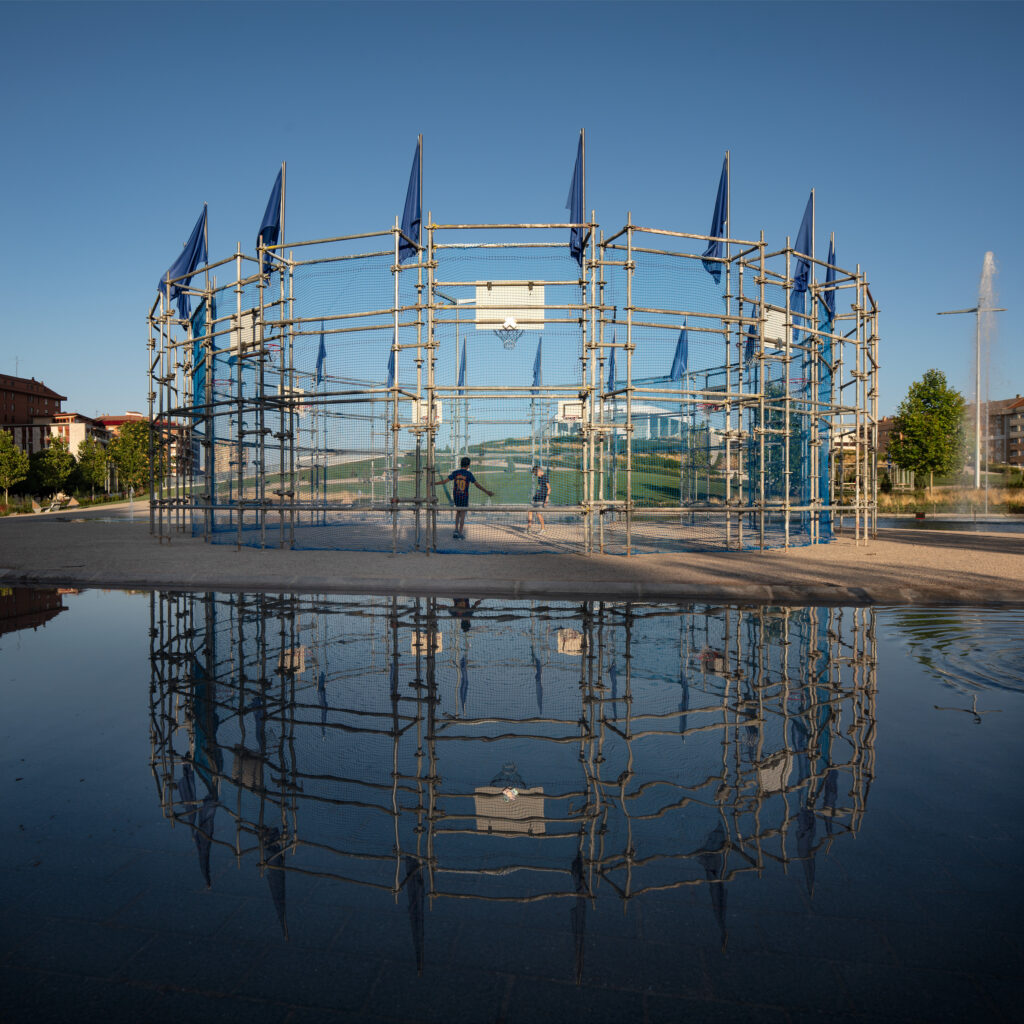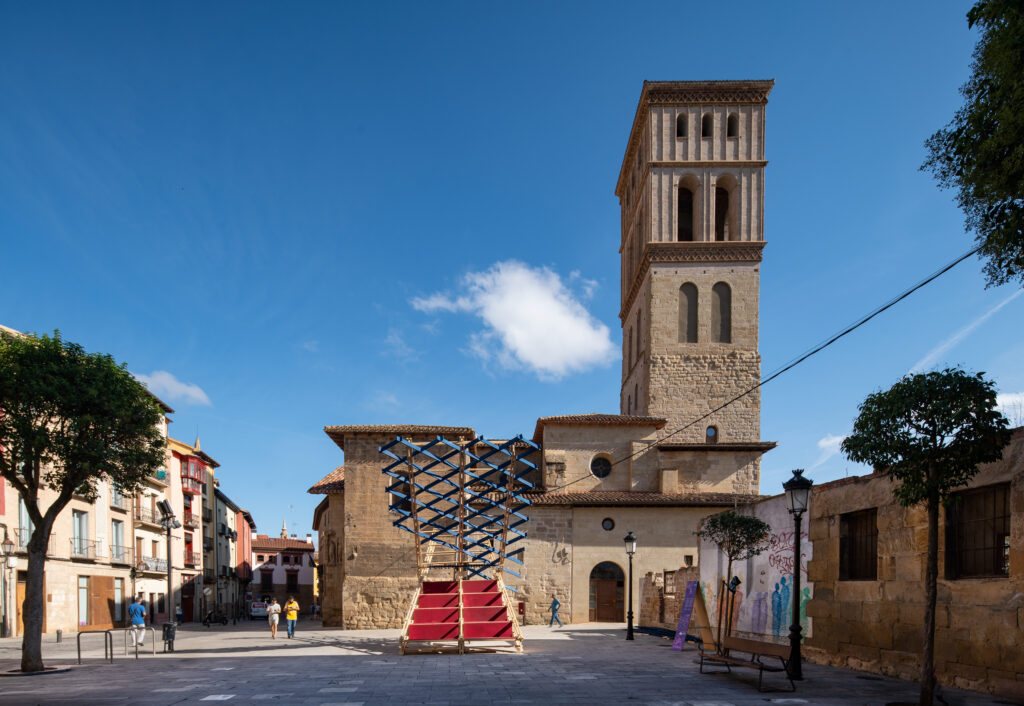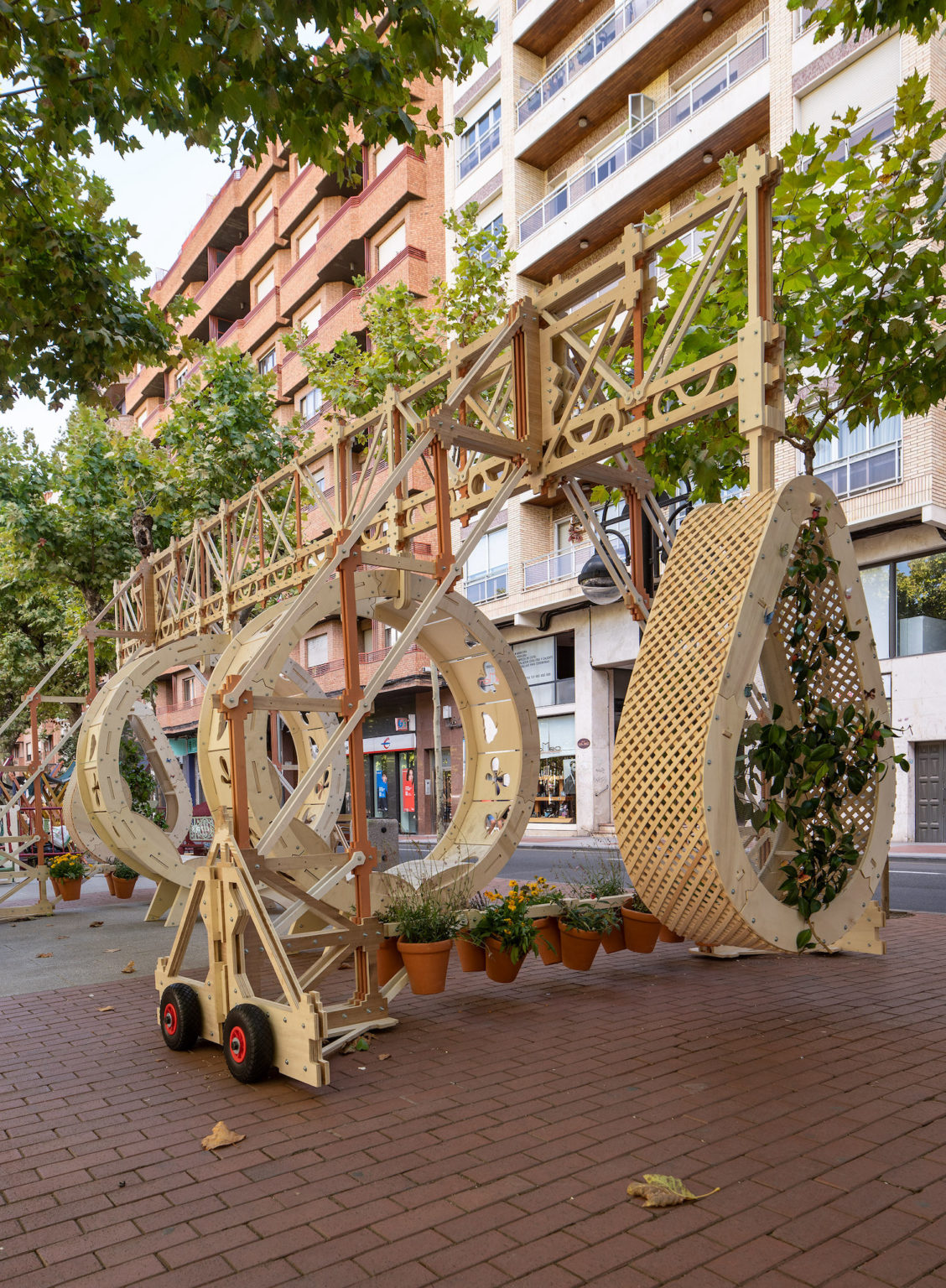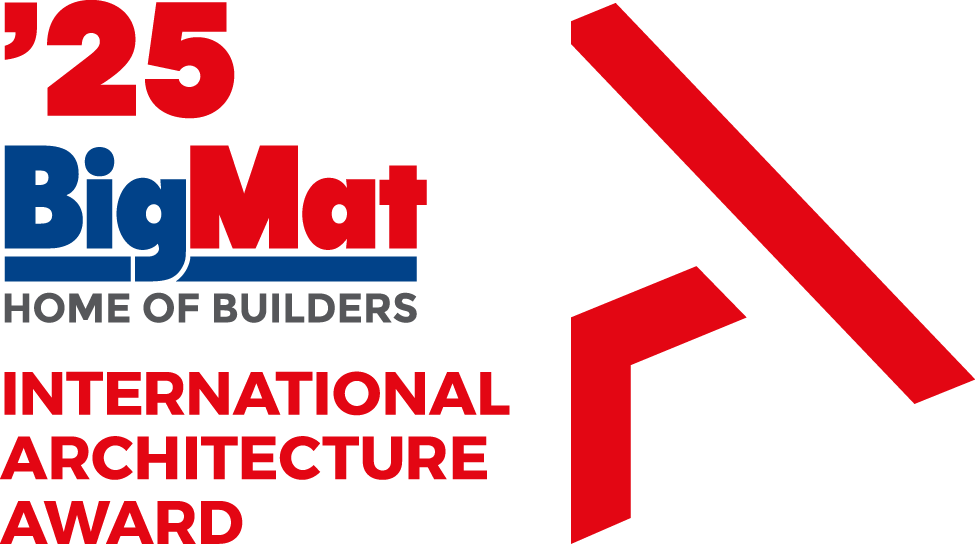Concéntrico is the International Festival of Architecture and Design of Logroño that annually proposes to reflect on the urban environment and the city. The Festival invites visitors to explore the city through installations, exhibitions, meetings and activities that propose new collective uses, strengthening the idea of community in the public space.

Since 2015, the festival has brought together in its seven editions 91 urban installations created by teams of national and international architects and designers who experiment with new fields of environmental design. In this way, a dialogue is established between the city, heritage and contemporary architecture that activates the reflection of citizens on these spaces.
The festival is organised by the Cultural Foundation of the Architects of La Rioja together with Javier Peña Ibáñez, promoter of the initiative, in collaboration with Logroño City Council, the Government of La Rioja, Garnica and Bodegas LAN, and has the support of more than 30 local, regional, national and international institutions, entities and companies.
The eighth edition will be held from September 1 to 6, 2022 with participants, guests, visitors and teams developing interventions in Logroño: 23 actions, workshops, 100 urban chairs and lounges, meetings, activities and exhibitions that transform the city by proposing new collective uses that reinforce the idea of community in public space.


Installations and Teams
Since 2015, the festival has realized 91 urban installations in its seven editions, to which are added in Concéntrico 08 the proposals of the participating teams:
Konstantin Grcic, Matali Crasset, Izaskun Chinchilla, Associates Architecture, Piovenefabi, Tudor Vlasceanu, SKULL Studio, Germane Barnes, Rintala Eggertsson Architects, BudCud, Tableau, Yemail Architecture, Pawel Grobelny, Inventaires#3, Dallas + Pool is cool, AAA, Ander López + Sarai Olabarrieta, Collective X and the invited schools with Gonzalo Herrero + Pati Santos – Central Saint Martins and Clara Alonso, Marta Basterra and Mikel Aguerrea – Escuela Superior de Diseño de La Rioja.


Focus – The city and the locations
In 2022 we expanded the festival’s usual focus to explore new urban practices: locations that emerge from constant listening to continue to raise debates that look at the city itself.
The projects explore themes such as the domesticity, identity, ecology, the city and play, and social commitment in locations that connect us with new landscapes such as Mount Cantabria, a viewpoint over Logroño, or the Ebro River along the riverbed; unique urban spaces with which to work on the next scale as La Rosaleda del Paseo del Espolón or Obispo Bustamante Street; or the new fabrics and spaces in transformation as the Felipe VI Park or the site of Marqués de San Nicolás Street where to claim the playful as a collective activity.

Arenas, Konstantin Grcic at Felipe VI Park – Concéntrico 08
ARENAS is a public installation consisting of three circular structures that are situated at the western tip of Logroño’s Parque Felipe VI. The structures are made of scaffolding elements and decorated with waving blue flags that add a touch of festivity to the site. Each “arena” is assigned to a particular activity: a round basketball court, a ring of drums, a circular array of swings. ARENAS offers itself not only as a place to gather and spend time together, it invites people of all ages to engage in a collective activity. To come along and play ball with friends and neighbours, to get together for a musical jam session or to swing collectively into the sunset. The installation provides a great freedom for public appropriation.

Embedded into the program of Concéntrico, the installation will be a forum for hosting some of the related events, performances and talks.

Dark sky, matali crasset at Paseo del Espolón – Concéntrico 08
Dark sky, simulates an owl that has just landed in the middle of the city. The intervention will make the Paseo del Espolón an intergenerational space that integrates the whole city in a dialogue with the Concha del Espolón, a kiosk in the form of an auditorium created in 1954.
The large yellow metal structure stands out for its curved contours and wooden cladding which, like the enigmas surrounding the myth of the owl, shows us a symbolic space that transforms between day and night:
During the day, the installation has an almost maternal presence that invites us to create intergenerational situations around three cohabiting spaces:
– a double tunnel for children’s play in which, as in the famous Tragantua, they are invited to enter the nose of the owl;
– a double inclined plane offering the possibility to lie down informally;
– a high plane, at the back, which invites to settle down, to exchange and to look at life through a visor.
At night, the owl wakes up and its eyes light up, inviting passers-by to settle down on its sloping surface to gaze at the stars. A work that appeals to the senses and reaffirms that the sky is above all a space of imagination and freedom where everything is in eternal movement.





